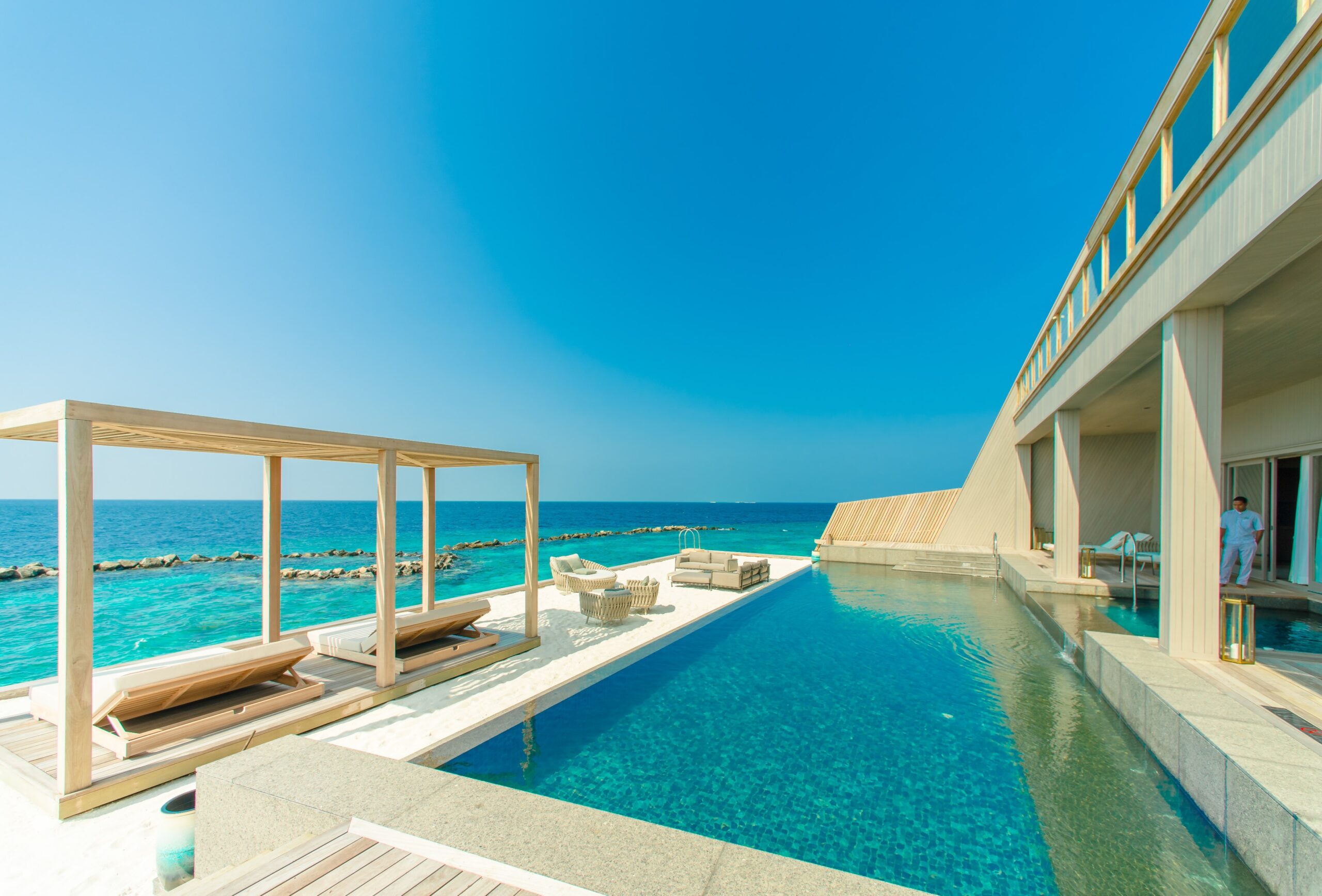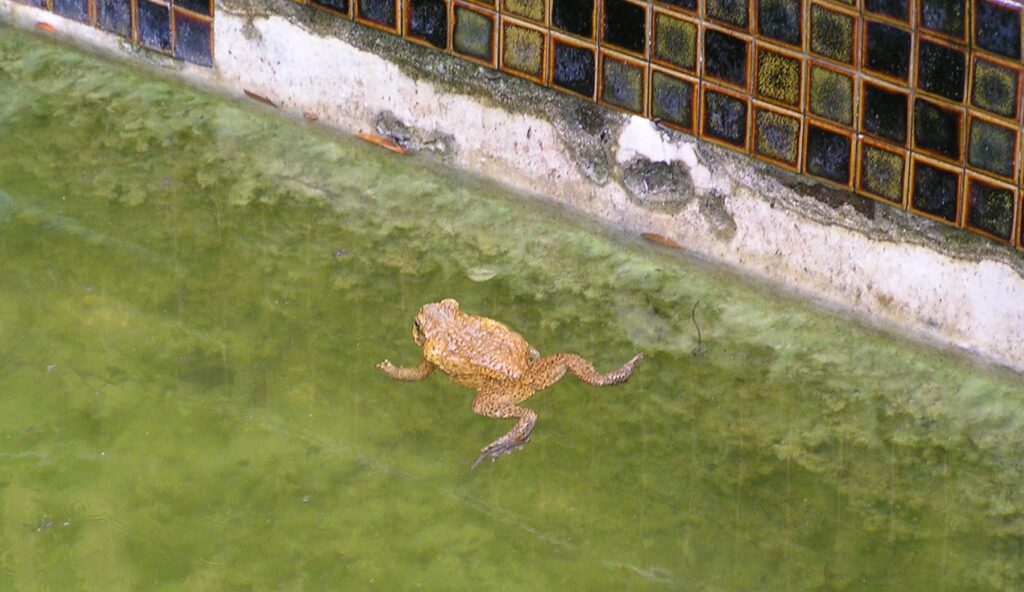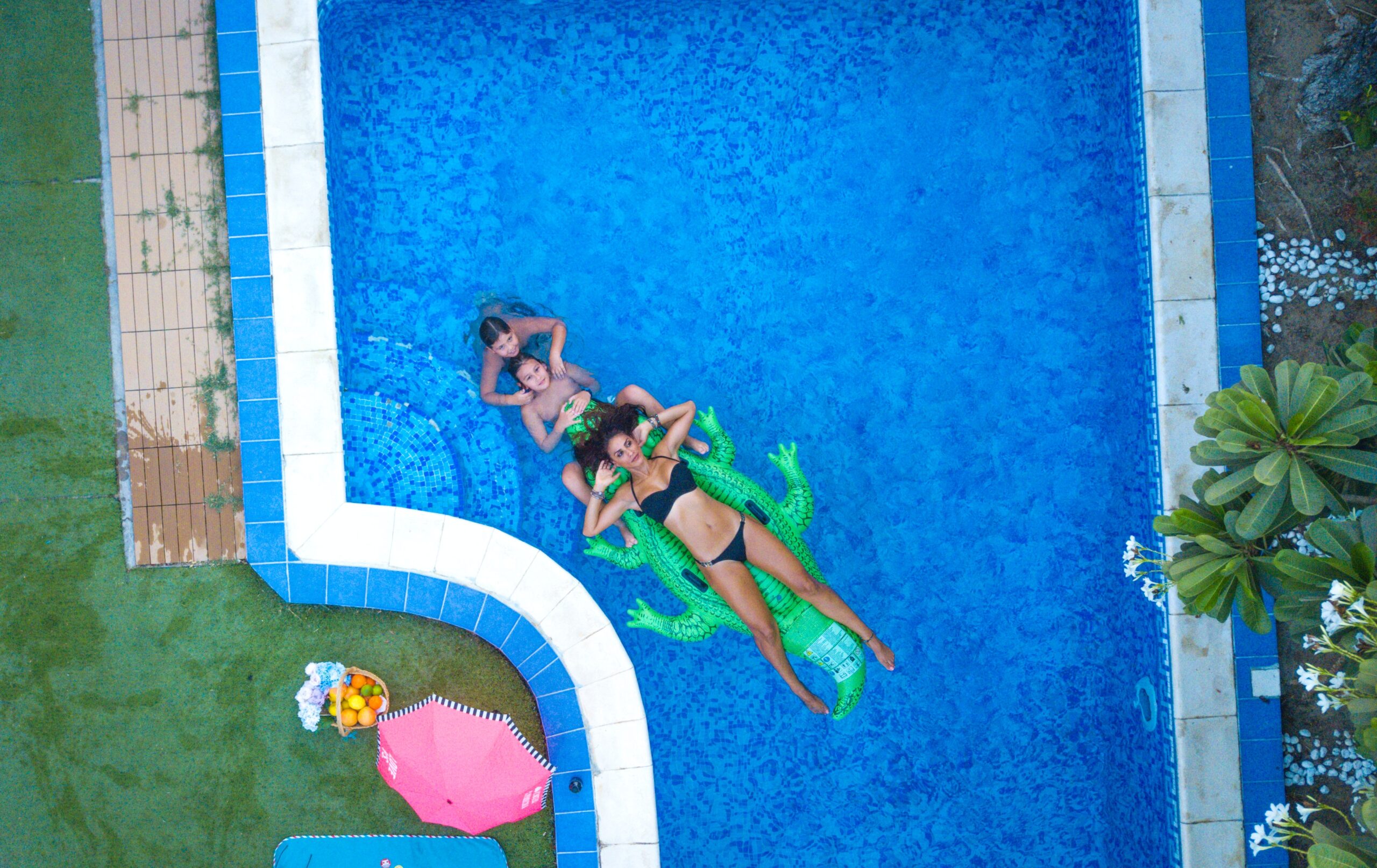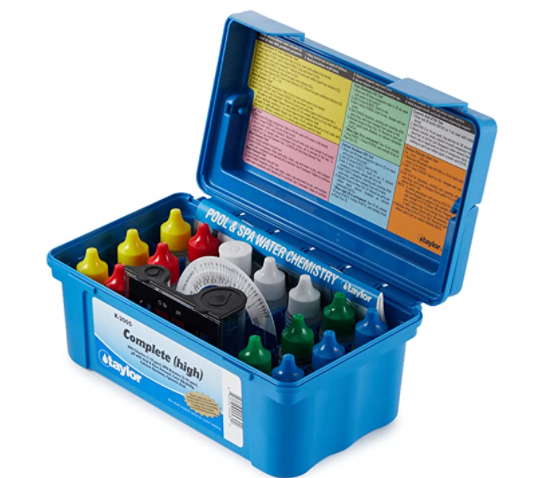No Green Here?

The basics and more
If you want to do more than the basics of pool water management, (scooping and vacuuming) then you need to spend some time understanding pool water chemistry.
The greatest issue with pools (and spas) is inconsistent or simply no pool water maintenance. There is a learning curve for sure, however if you want to save money, then this is one area where a little time on your part will bring big savings.

If your pool water goes green, then its going to take time and money to bring it back to a healthy and swimmable state. And a green pool is simply not swimmable but can be causing issues with the pump and filtration equipment as well. So, if this scares you, and you are tempted to engage a pool water technician, not all of them are as caring as you. Yes, they may come at $50+ per call (say $100 – 200 per month) plus chemicals and on a regular cycle, or as needed. But what happens if the pool goes green between visits. How will they attend then? So, it’s in your interest to know beforehand anyways. And even your regular pool technicians’ attention may not be fool proof as they are on a time limit per pool to get through the daily number. And if your pool goes “off” well of course they get to add chemicals at your cost.
Keeping it healthy every day does require a retune and consistency in maintaining the correct balance. Fortunately, there is plenty of information available to guide you and make sure you know what you are looking at and how to keep your pool healthy.
So, ether way its best you are familiar with pool water chemistry and understand what is going on with your pool, what chemicals are being added and why. As it is, pools are mild chemical baths and the fewer chemicals the better for your health, of course keeping pool water swimmable at the same time.

For many pools maintaining a healthy, well-balanced pool is not difficult and you will only ever need a few chemicals. Many of the chemicals you see in your pool shop are only there for when there is problem. By monitoring the key 4, Chlorine, pH, Calcium Hardness and Total Alkalinity, you will have covered most of the key factors. And this will prevent issues from arising. The complexity (or lack) of pool water chemistry management is related to a few key factors and these include:
- weather conditions (rain, drought, heat or cool).
- supply of pool water (town supply, bore – well, rain), the first 2 may contain a range of minerals and metals, that add issues.
- pool usage profile (none, little, weekly parties or irregular usage profiles)
- actual surface of the pool, (Paint, Fiberglass, Marcite, Pebble Tec or the more modern plasters), the first 2 provide a non-reactive, hard, smooth surface meaning less chemical needs as the surface is inert. The remainder in the list above are softer, reactive surfaces, which need more chemicals and management, and surfaces are absorbent, (mold and algae growth).
As you can see there are a range of factors to consider and once you are knowledgeable about them and then you can look after your most times or at least know what the technician is doing and why (why the charges)
How to test

Chlorine, best to plan ahead so the level is never 0. Big weekend coming with kids etc, then be proactive a few days in advance and keep the chlorine level up 1 – 3 ppm and after the party add some more (night-time). After heavy rain, or several hot days also check and add etc chlorine even to the 3 – 5 ppm free chlorine level. Letting it get to 1 ppm means you have no leeway, and it can soon be 0.
You can test the Chlorine level with Test Strips however you are much better to get a proper test kit such as Taylor K2005, (online or pool shop). This will allow you to test daily and get a good understanding of how your pool Chlorine level fluctuates, due to weather and bather activity. Then you can be confident of your pool and its hygiene needs and be proactive, saving it going green. This will save you a good amount of cash, for a few minutes work each day.
For the pH, Calcium Hardness and Total Alkalinity, see the separate “I’m A Pool Water Chemist Now”, Blog Page.
If you do want to take on the chemical maintenance in addition to the scooping and vacuuming maintenance then you will need to invest some time into learning about pool and spa water chemistry. Improper water chemistry is obviously a problem if your water turns green and you can’t go swimming…but it is also potentially much worse than this. Poorly maintained water can absolutely cause damage to pool surfaces and pool equipment so you definitely do not want to drop the ball being the person responsible for maintaining your water. If that sounds scary to you, and sounds like too much responsibility, just know that many “service companies” actually do very little to protect your pool from chemical damage. Certainly there are many good, and totally legitimate service and maintenance companies…but so you can also say that there are many bad ones. When you learn about water chemistry you will have control over the chemical levels in your water. I can assure you that nobody, not even good service companies, will care about your pool and your pool water as much as you will care about your own.
Staying with the above example of taking on your own chemical maintenance you need to be aware that many of the chemicals available for sale in a pool and spa store you actually do not need. Many of the chemicals for sale in pool and spa stores are something that you would add to your pool once a problem has developed. If you are proactive with caring for your pool then you can probably avoid using the vast majority of these chemicals completely.
One of the most important things that pool owners can do to reduce the water chemistry and maintenance costs is to plan ahead to avoid letting the chlorine in the pool drop to zero. If you have a pool party be sure to add extra chlorine at the end of the night. If it is going to rain, or has rained a lot recently, be sure to add some extra chlorine. If it is extra hot and sunny for extended periods…you guessed it – check on those chlorine levels and top them up to the 3 to 5 ppm range. If you run at 1 ppm of free chlorine regularly this leaves you essentially no room to have the chlorine levels fluctuate before you are at zero…which you need to never do. Minimal chlorine exposure is good but not if it means that your water is constantly a problem for you to maintain.
Test strips are cheap and work reasonably well for testing sanitizer levels (although every pool owner should have the Taylor K-2006 test kit). This means that you can easily afford to test your chlorine levels every day. This will enable you to understand the range at which your pool tends to operate, as well as how much of a difference heavy bather loads or rain makes to your chlorine consumption rate. Knowledge is power when it comes to your pool water chemistry and the more you endeavor to learn and know about it, the more you will be able to effectively control your day to day chemical maintenance costs. Keep your chlorine levels a little higher than the minimum safe level of 1 ppm, closer to the 3 to 5 ppm range, and this will reduce on the amount of green water situations you encounter throughout the year.
